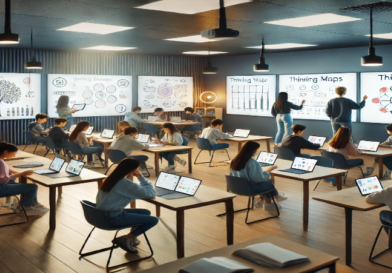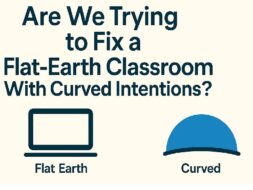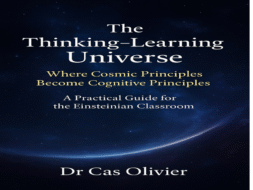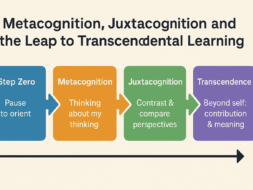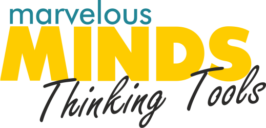ThinIn a world where information is just a click away, our children’s brains are wired to think differently. Growing up with technology at their fingertips, they can retrieve vast amounts of information in seconds, developing instincts and skills traditional classrooms often overlook. Here’s how innovative education, rooted in Thinking Tools, is transforming learning by harnessing children’s natural abilities and equipping them for the future.
The Changing Role of Teachers: From Instructors to Curators
Today, effective teaching isn’t about delivering information—it’s about curating experiences that develop critical thinking and problem-solving skills. The word “curator” originates from the Latin curare, meaning "to care," which perfectly captures this evolved role. Curator-teachers guide students through discovery, leveraging students’ curiosity and equipping them with tools to navigate and organize information meaningfully. It’s no longer just about transferring knowledge; it’s about empowering learners to own their learning journey.
Why Thinking Tools Make Sense for Modern Learners
The Thinking Tools approach is unique because it aligns with how children naturally interact with information. Traditional teaching often relies on rote memorization or step-by-step “recipes,” especially in subjects like math. However, the human brain isn’t built to simply recall sequences; it’s designed to analyze, categorize, and synthesize information. Thinking Tools capitalize on these innate abilities, helping children not only understand concepts but also develop the ability to figure things out independently—whether in math or any other subject.
Building Strong Foundations with Thinking Tools
Every child brings different strengths and learning gaps to the table. Rather than expecting all students to follow the same path, Thinking Tools help identify and strengthen missing foundational blocks. By working with students to understand core principles and patterns, this approach builds a solid groundwork that supports future learning. Even better, the improvements aren’t just long-term; they’re immediate. Students experience “AHA” moments that lead to deeper understanding and long-term retention, allowing for immediate academic gains and growth that stick.
The Power of “Figure-It-Out” Skills in Math and Beyond
A key aspect of Thinking Tools is teaching “figure-it-out” skills. In math, for instance, many students struggle with merely following formulas or steps because they haven’t learned how to think through a problem independently. Thinking Tools encourage students to explore, experiment, and reason their way to solutions. This skill—learning to solve problems rather than just answer questions—is invaluable. As students learn to think critically, they gain confidence, self-reliance, and resilience, which benefits them across all areas of life.
Bridging Learning Gaps Through Cognitive Fitness
One pressing challenge in education today is the growing learning gap that many schools struggle to address. With the Thinking Tools approach, cognitive fitness becomes a priority. As students strengthen their “thinking muscles,” they learn to process information faster and more efficiently. It’s about building THINK hours—intentional time spent developing thinking skills that can be applied to any subject. This focus on cognitive fitness enables students to stay ahead of learning gaps, providing a stronger foundation that not only boosts academic performance but also supports lifelong learning.
Fostering Self-Directed, Insightful Learners
Thinking Tools unlocks a student’s ability to take ownership of their education. Instead of being passive recipients of information, they become active participants, able to analyze, classify, and draw connections. In these “AHA” moments, learning truly comes alive. Students can recognize patterns, identify cause-and-effect relationships, and make informed decisions, which leads to insights that are meaningful and memorable.
Immediate Gains in Academics and Improved Parent-Child Relationships
The impact of Thinking Tools goes beyond just academic improvements. Parents often report a stronger connection with their children, as they observe not only improved grades but also a newfound enthusiasm for learning. When children experience success in their studies, they feel proud, and this positivity spills over into their home lives. A supportive environment at home, in turn, reinforces their confidence and willingness to learn, creating a virtuous cycle of academic and personal growth.
A Lifelong Toolset for Success
Learning is no longer confined to the classroom. The Thinking Tools approach provides students with a set of lifelong skills, enabling them to approach any subject or problem with confidence and curiosity. By encouraging students to “figure it out” rather than memorizing answers, we are equipping them with a powerful mindset that fosters resilience, adaptability, and critical thinking—all essential skills for the future.
As we embrace this shift from traditional methods to Thinking Tools, we’re doing more than just improving test scores. We’re cultivating a generation of learners who can think independently, make informed decisions, and approach life with an empowered mindset. This approach doesn’t just prepare students for exams; it prepares them for life. In the end, isn’t that the ultimate goal of education?king Tools Transform Education for Today’s Digital Learners

